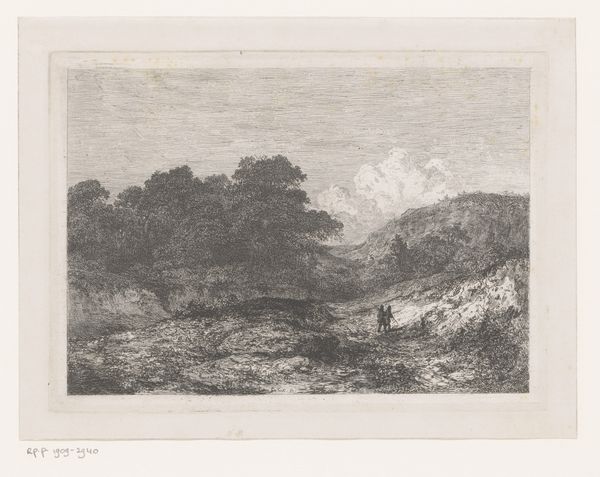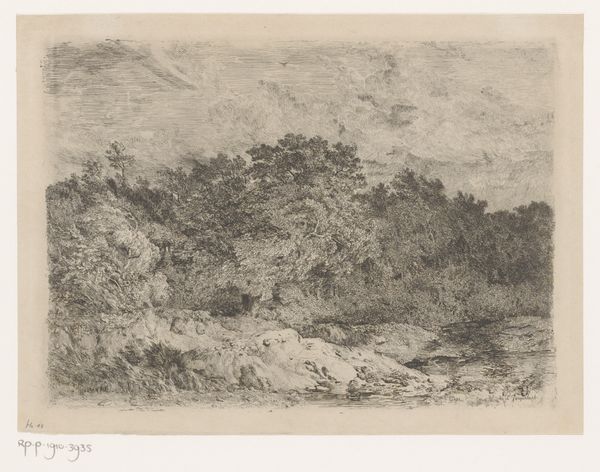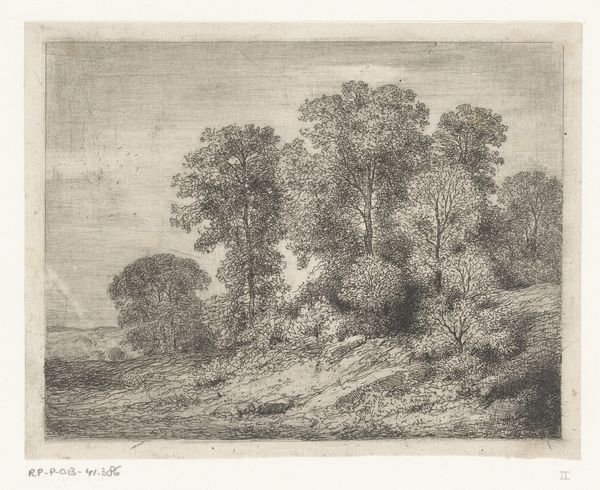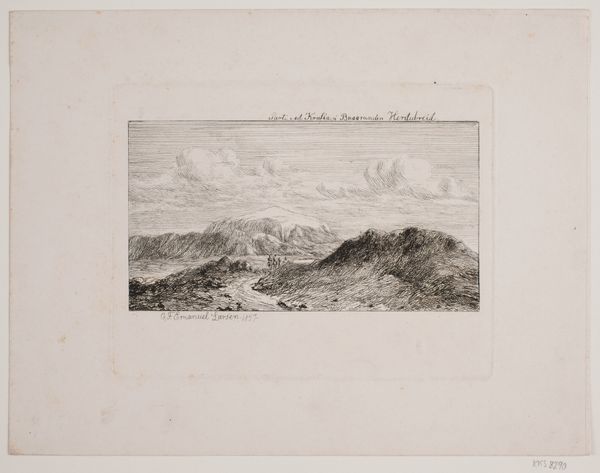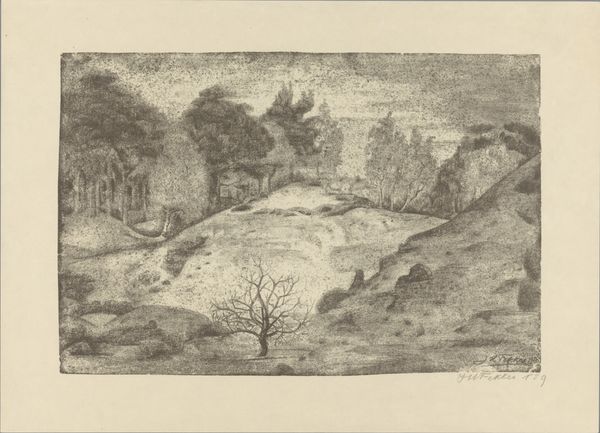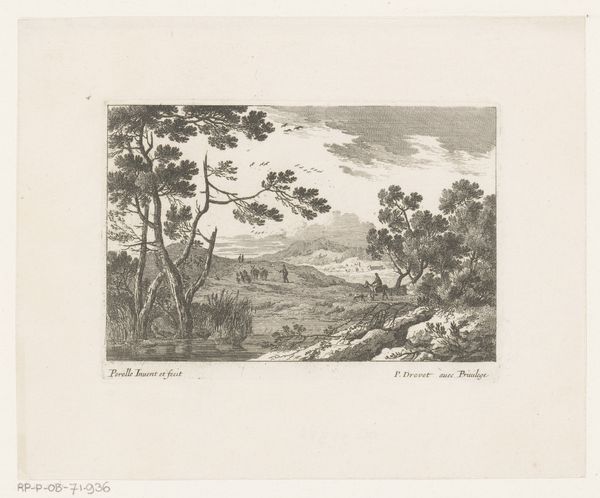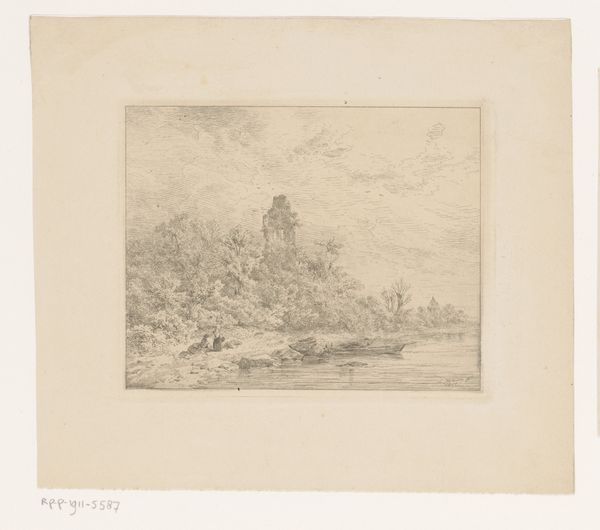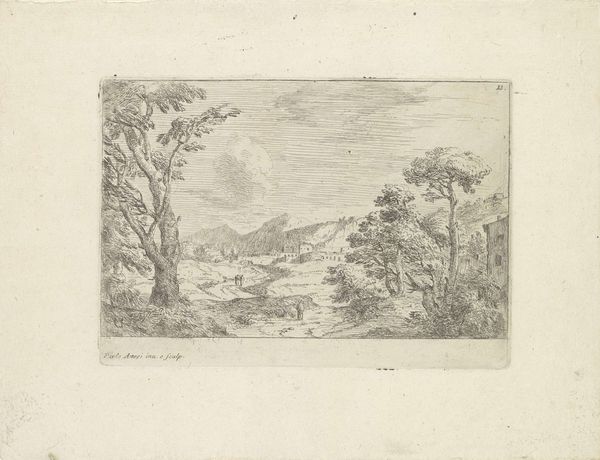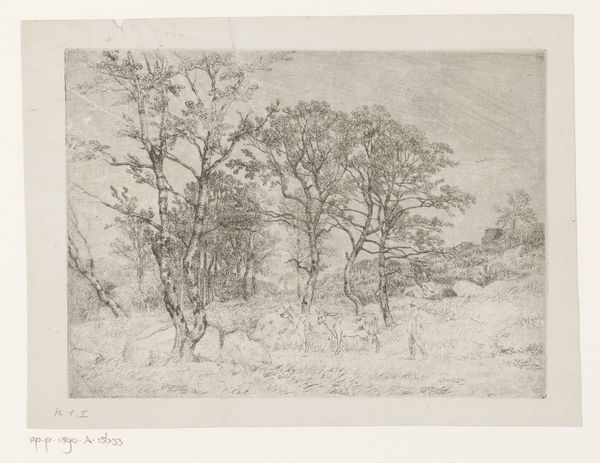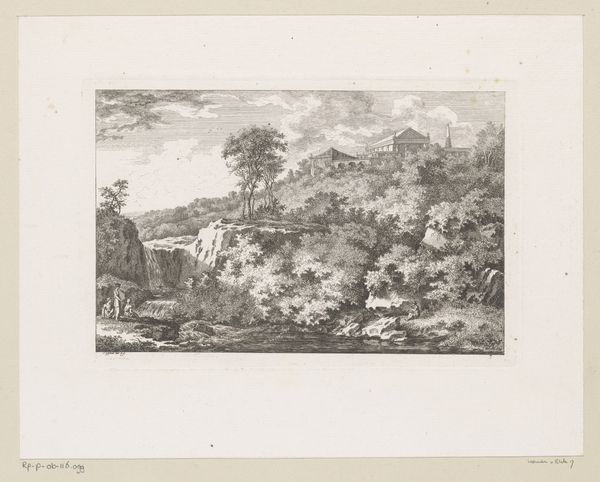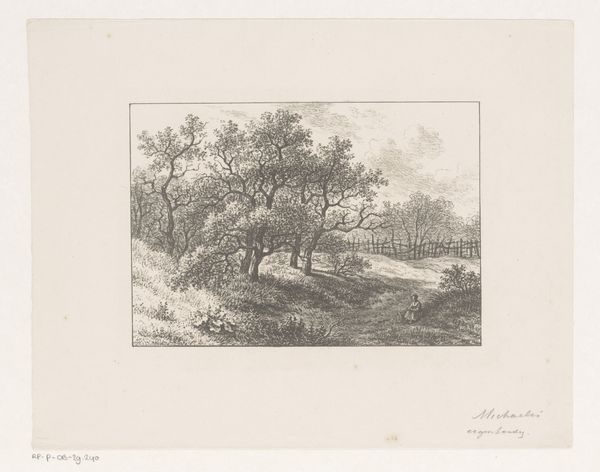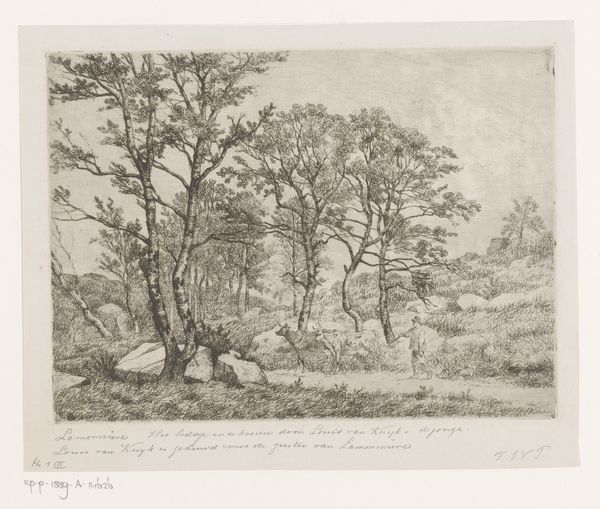
print, etching
#
16_19th-century
# print
#
etching
#
old engraving style
#
landscape
#
forest
#
romanticism
#
realism
Dimensions: height 170 mm, width 235 mm
Copyright: Rijks Museum: Open Domain
César de Cock created this landscape using etching, a printmaking technique that democratized image production in the 19th century. The fine lines you see weren't drawn directly; instead, the artist covered a metal plate with a waxy, acid-resistant ground, then scratched the design into it. Immersing the plate in acid bit away the exposed lines, creating grooves that would hold ink. This painstaking process highlights the labor involved in even seemingly simple images. The final print on paper allowed for wider distribution than a unique painting, making art more accessible. The very nature of printmaking raises questions about originality and value. Is this landscape less 'artistic' because it's reproducible? De Cock's embrace of this medium challenges traditional hierarchies, suggesting that skill and artistic vision can thrive even within industrial processes. By understanding the means of production, we can appreciate the social and cultural significance embedded in this seemingly straightforward image of nature.
Comments
No comments
Be the first to comment and join the conversation on the ultimate creative platform.
